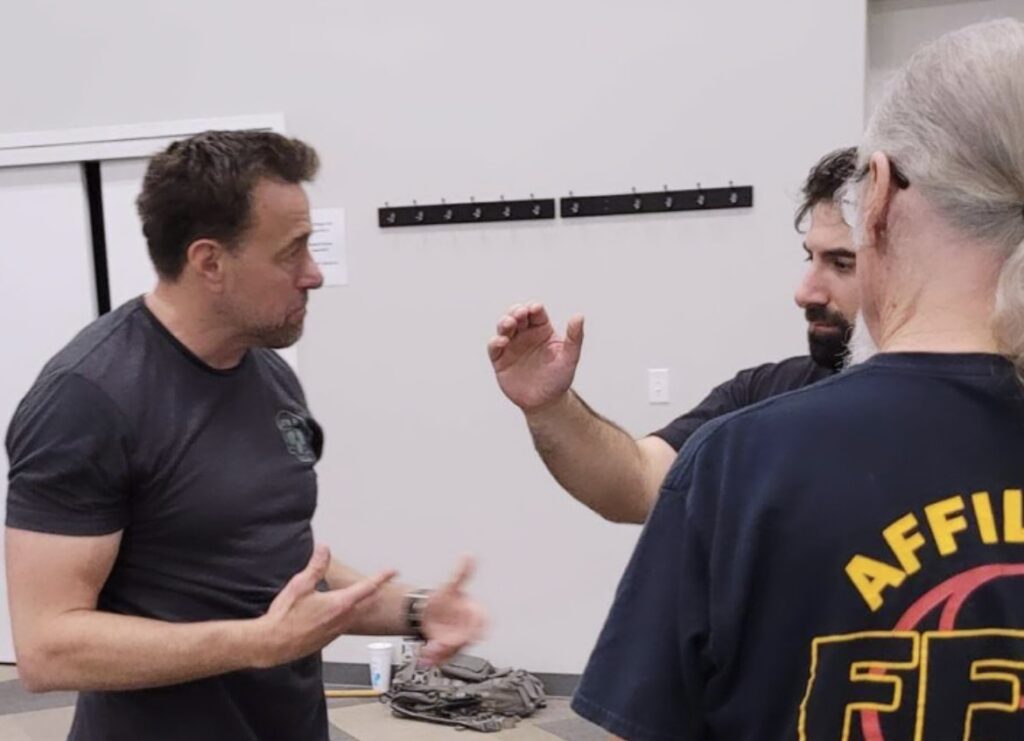In the realm of personal protection and self-defense, a term that often floats under the radar yet is of paramount importance is “Pre-Attack Indicators.” The ability to identify and interpret these indicators can be the difference between a timely escape and becoming a potential victim. Today, I’d like to delve into the importance of understanding these signals and why, in the C-Tac® system, we give them such prominence.

What are Pre-Attack Indicators?
Pre-Attack Indicators are subtle (and sometimes not-so-subtle) cues or behaviors a potential assailant exhibits before a physical altercation or attack occurs. These cues can be verbal, physical, or even psychological. Recognizing these signs early can give you the precious seconds needed to react, reposition, or even avoid an impending threat.
The C-Tac® Approach
While many martial arts systems focus heavily on physical techniques and responses to an already-initiated threat, the C-Tac® system believes in a holistic approach to personal safety. It’s not just about reacting; it’s about being proactive. By studying these Pre-Attack Indicators, we empower our practitioners with a heightened sense of situational awareness that’s second to none.
Why this emphasis? Isn’t martial arts all about the physical response? The answer is nuanced. Physical techniques are crucial, no doubt. But wouldn’t it be better to perceive and evade a threat before it gets to that point? That’s where C-Tac® stands out. Our system isn’t merely a martial art; it’s a comprehensive study of personal protection in all its facets.
Key Pre-Attack Indicators:
- Target Glancing: The potential attacker frequently scans the surroundings, checking for witnesses or potential interruptions.
- Grooming Gestures: Touching their face, neck, or clothing; often a sign of nervousness.
- Closing the Distance: An unnaturally fast approach or trying to get unusually close without reason.
- Concealment: A hand concealed in a pocket or behind the back might be hiding a weapon.
- Excessive Sweating: Unnatural sweating can be a sign of heightened adrenaline or nervousness.
- Aggressive Body Language: Puffing up the chest, clenched fists, or an aggressive stance.
- Verbal Threats or Challenges: Sometimes, the threat is announced before it’s acted upon.
- Sudden Shifts in Emotion: Rapid mood changes, especially from calm to aggressive.
- Forced Team-ups: When two or more individuals try to corner or surround you.
- Consistent Eye Contact: Staring can be a way of intimidating or gauging your fear.
These are just a few key indicators, and it’s crucial to note that context matters. Not every sign means an attack is imminent. However, these indicators can provide a clear picture of a person’s intent when observed in conjunction.
The Three Pillars of the C-Tac® System: Spotlight on Self-Protection
In the C-Tac® system, our holistic approach to personal safety is anchored in three foundational pillars: Self-Defense, Self-Preparation, and Self-Protection. Each of these pillars is crucial, but today, given our focus on Pre-Attack Indicators, let’s delve deeper into the realm of Self-Protection.
Self-Protection: A Proactive Approach
The essence of Self-Protection lies not in reactive measures but in proactive preparedness. While self-defense techniques teach us how to respond to immediate threats, self-protection empowers us to preemptively recognize, evaluate, and avoid potential dangers before they escalate. And at the heart of this proactive approach are Pre-Attack Indicators.
Studying Pre-Attack Indicators is not merely about memorizing a list of behaviors. It’s about cultivating an intuitive sense of awareness, about sharpening one’s observation skills to the point where these indicators become instinctively recognizable. In the C-Tac® system, we prioritize this training because, in many scenarios, early detection is the key to avoidance and safety.
But why is this so unique to C-Tac®? Many martial arts systems emphasize physical techniques, with situational awareness taking a backseat. However, in our system, understanding human behavior, intentions, and signals is just as crucial as any physical technique. It’s this blend of mental acuity with physical prowess that sets C-Tac® practitioners apart.
Integrating Pre-Attack Indicators into Self-Protection
By integrating the study of Pre-Attack Indicators into our Self-Protection pillar, we equip C-Tac® members with a dual advantage. First, they develop a keen sense of awareness that allows them to spot potential threats in various scenarios. Secondly, they can make informed decisions, whether that’s evading a situation, alerting authorities, or, if necessary, preparing for a physical confrontation.
In real-world situations, the time between recognizing a threat and it materializing can be mere seconds. Those seconds are invaluable. And by prioritizing the study of Pre-Attack Indicators, we ensure that our practitioners can make the most of that critical window.
In Conclusion:

Pre-Attack Indicators are the silent alarm bells of an impending threat. In the C-Tac® system, we don’t just train to react; we train to foresee, evaluate, and decide. This proactive approach, combined with a rigorous study of physical defense, always places our practitioners a step ahead. By understanding and identifying these indicators, we stand apart from traditional martial art systems and ensure that our members are ever-prepared, vigilant, and safe.
Stay safe and stay aware.
The C-Tac® system was innovatively conceptualized and brought to fruition by Alan Baker, with the primary goal of empowering individuals to be adequately prepared for not just self-defense situations but a myriad of potential circumstances life may bring. The conception of the C-Tac® system stemmed from Alan’s observation of the scarcity of practical, comprehensive, and meaningful training systems addressing this need. He sought to cut through the swathes of well-marketed but ultimately ineffective programs that are readily available.
For those interested in extending their journey with the C-Tac® system and exploring the opportunity to become a C-Tac® Instructor, we encourage you to visit our association website here: https://civtaccoach.com/
Should you have any questions about the program, or if you simply wish to engage in further dialogue about C-Tac® and its principles, please feel free to reach out to Coach Baker or any member of our committed team at any time. We are here to guide and support you on your personal safety, awareness, and empowerment journey.

